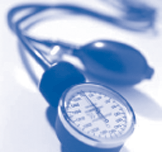 |
||||
4 Steps to Control Your Diabetes. For Life. |
||||||||||||||||||||||||||||||||||||||||||||||||||||||||||||||||||||||||||||||||||||||||||||||||||||||||||||||||||||||||||||||
|
If you have just found out that you have diabetes, you may be upset and need some help. Even if you have lived with diabetes for a while, you may want to do more to take care of yourself.
Here are four key steps to help you control your diabetes and live a long and active life. 4. Get routine care to avoid problems. Diabetes is a serious disease. It affects almost every part of the body. That is why a team of people may help you take care of your diabetes:
You are the most important member of the team
The |
||||||||||||||||||||||||||||||||||||||||||||||||||||||||||||||||||||||||||||||||||||||||||||||||||||||||||||||||||||||||||||||
Step 1: Learn about diabetes. ^ top
Diabetes means that your blood glucose (blood sugar) is too high. There are two main types of diabetes.Type 1 diabetes - the body does not make insulin. Insulin helps the body use glucose from food for energy. People with type 1 need to take insulin every day. Type 2 diabetes - the body does not make or use insulin well. People with type 2 often need to take pills or insulin. Type 2 is the most common form of diabetes. Gestational (jes-TAY-shon-al) diabetes - may occur when a woman is pregnant. It raises her risk of getting another type of diabetes, mostly type 2, for the rest of her life. It also raises her child's risk of being overweight and getting diabetes. Diabetes is serious.You may have heard people say they have "a touch of diabetes" or "your sugar is a little high." These words suggest that diabetes is not a serious disease. That is not correct. Diabetes is serious, but you can learn to manage it! All people with diabetes need to make healthy food choices, stay at a healthy weight, and be physically active every day. Taking good care of yourself and your diabetes can help you feel better. It may help you avoid health problems caused by diabetes such as:
When your blood glucose is close to normal you are likely to:
Step 2: Know your diabetes ABCs. ^ top
A for the A1C
test (A-one-C) B for Blood
pressure. High blood pressure makes your heart work too hard. It can cause heart attack, stroke, and kidney disease. C for Cholesterol. (ko-LES-ter-ol) LDL or "bad" cholesterol can build up and clog your blood vessels. It can cause a heart attack or a stroke. HDL or "good" cholesterol helps remove cholesterol from your blood vessels.
Step 3: Manage your diabetes. ^ top
Many people avoid the long-term problems of diabetes by taking good care of themselves. Work with your health care team to reach your ABC goals. Use this self-care plan.
Step 4: Get routine care. ^ top
See your health care team at least twice a year to find and treat any problems early. Ask what steps you can take to reach your goals. At each visit be sure you have a:
Two times each year get:
Once each year be sure you have a:
At least once get a:
My Diabetes Care Record ^ topRecord your targets and the date, time, and results of your tests. Take
Self Checks of Blood Glucose Record your targets and the date, time, and results of your tests. Take
Where to get help: ^ top American Association of Diabetes Educators American Diabetes Association American Dietetic Association Centers for Disease Control and Prevention Centers for Medicare & Medicaid Services National Diabetes Education Program National Institute of Diabetes and Digestive and Kidney Diseases The US Department of Health and Human Services' National Diabetes Education Program is jointly sponsored by the
National Institutes of Health and the Centers for Disease Control
and Prevention with the support of more than 200 partner organizations. *PDF files require the free Adobe Acrobat Reader application for viewing. All our publications are copyright-free. Please duplicate and distribute as many copies of these materials as desired. Attention visually impaired visitors: To use common screen reading programs with PDF documents, please visit access.adobe.com, which provides a set of free tools that convert PDF documents to simple HTML or ASCII text. |
||||||||||||||||||||||||||||||||||||||||||||||||||||||||||||||||||||||||||||||||||||||||||||||||||||||||||||||||||||||||||||||
NDEP
Home | About
Diabetes | Resources
for Health, Education, and Business Professionals DHHS
Home | NIH
Home | NIDDK
Home | CDC
Home |
||||||||||||||||||||||||||||||||||||||||||||||||||||||||||||||||||||||||||||||||||||||||||||||||||||||||||||||||||||||||||||||

Includes information about managing the ABCs of Diabetes. Also features information for people with diabetes who are eligible for Medicare benefits.
Learn how to prevent or delay type 2 diabetes through small steps.













